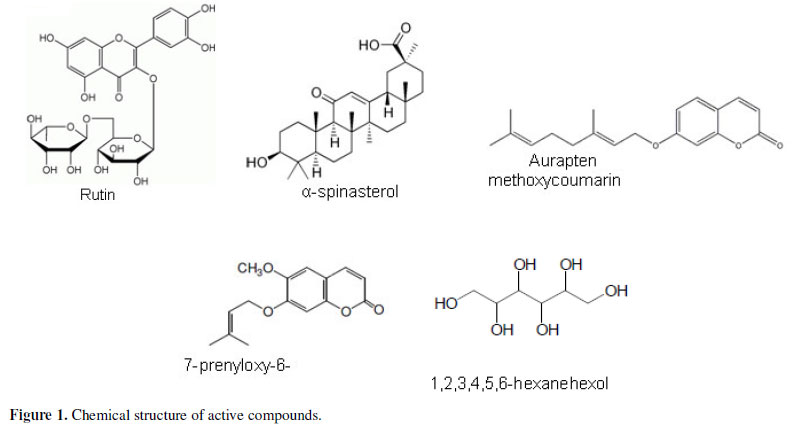Crude extracts and fractions of five species of Polygala - P. campestris, P. cyparissias, P. paniculata, P. pulchella and P. sabulosa - were investigated for their in vitro antifungal activity against opportunistic Candida species, Cryptococcus gattii and Sporothrix schenckii with bioautographic and microdilution assays. In the bioautographic assays, the major extracts were active against the fungi tested. In the minimal concentration inhibitory (MIC) assay, the hexane extract of P. paniculata and EtOAc fraction of P. sabulosa showed the best antifungal activity, with MIC values of 60 and 30 µg/mL, respectively, against C. tropicalis, C. gattii and S. schenckii. The compounds isolated from P. sabulosa prenyloxycoumarin and 1,2,3,4,5,6-hexanehexol displayed antifungal activity against S. schenckii (with MICs of 125 µg/mL and 250 µg/mL, respectively) and C. gattii (both with MICs of 250 µg/mL). Rutin and aurapten isolated from P. paniculata showed antifungal activity against C. gattii with MIC values of 60 and 250 µg/mL, respectively. In the antifungal screening, few of the isolated compounds showed good antifungal inhibition. The compound α-spinasterol showed broad activity against the species tested, while rutin had the best activity with the lowest MIC values for the microorganisms tested. These two compounds may be chemically modified by the introduction of a substitute group that would alter several physico-chemical properties of the molecule, such as hydrophobicity, electronic density and steric strain.
Polygalaceae; Polygala species; antifungal activity; rutin; α-spinasterol




